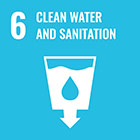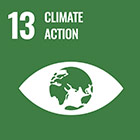United Nations Sustainable Development Goals (SDGs)
After decades of work by several nations, United Nations (UN) departments, and conferences, the United Nations Sustainable Development Goals, or SDGs, were created.
All countries are encouraged to embrace the 2030 Agenda for Sustainable Development, which 193 UN Member States adopted in 2015. The 17 SDGs are designed for all nations and are supposed to be a call to action.
The goal of the SDGs is to promote “peace and prosperity for people and the planet, now and into the future.”
The SDGs focus on all three types of sustainability that we have discussed. For example:
-
SDGs 1 (No poverty) and 8 (Decent work and economic growth) directly support economic sustainability.
-
SDGs 3 (Good health and well-being) and 5 (Gender equality) directly support social sustainability.
-
SDGs 14 (Life below water) and 15 (Life on land) directly support environmental sustainability.
-
Some SDGs, such as 9 (Industry, innovation, and infrastructure) and 13 (Climate action) support multiple types of sustainability, as they affect many aspects of human society and global systems.
-
SDG 2 (Zero hunger) contains targets from all three Sustainability pillars. Social sustainability is supported through the reduction of malnutrition, economic sustainability is supported through improvements in agricultural trade, and environmental sustainability is supported by increases in climate resilience.
UN SDGs
Learn more about what you can do to support each SDG and about what UNB is doing right now.
1: No poverty
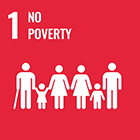
What can I do?
- Donate what you don't use
- Support local banks, such as Greener Village and the Saint John Community Food Basket
What is UNB doing?
- Provides student support through the Financial Aid Office
- Provides community support through Residence charities
2: Zero hunger
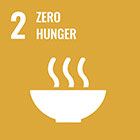
What can I do?
- Waste less food
- Support local farmers
What is UNB doing?
- Fresh food bags
- Community garden
- Free food vegetable planters
3: Good health and well-being
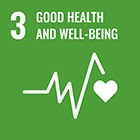
What can I do?
- Vaccinate your family
- Place yourself on the organ and tissue donors’ registry in your country
What is UNB doing?
- Launched the Integrated Health Initiative
4: Quality education
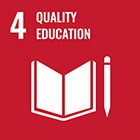
What can I do?
- Help educate the children in your community
- Volunteer with Promise Partnership
What is UNB doing?
- Faculty of Education
- Promise Partnership
- Opportunities from the Office of Experiential Education
5: Gender equality
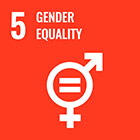
What can I do?
- Empower women and girls
- Support and ensure equal rights
What is UNB doing?
- Support female-led organizations on both campuses
- Muriel McQueen Fergusson Centre
6: Clean water and sanitation
7: Affordable and clean energy

What can I do?
- Use energy efficient appliances and lights
- Turn off lights and unplug electronics when not in use
What is UNB doing?
- Initiated the Energy Management Program
8: Decent work and economic growth
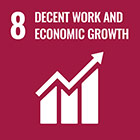
What can I do?
- Create or support job opportunities for youth
What is UNB doing?
9: Industry, innovation and infrastructure
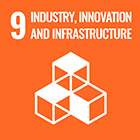
What can I do?
- Fund projects that provide basic infrastructure
What is UNB doing?
10: Reduced inequalities
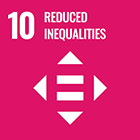
What can I do?
- Support the marginalized and disadvantaged
- Learn more about EDI (equity, diversity & inclusion) with the EDI+ modules
What is UNB doing?
11: Sustainable cities and communities
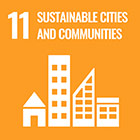
What can I do?
- Bike, walk, or use public transit
- Support investment in public transit
What is UNB doing?
- Experiential courses, including Unhealthy Cities (POLS 4632)
12: Responsible consumption and production
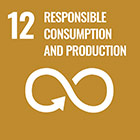
What can I do?
- Recycle paper, plastic, glass, and aluminum
What is UNB doing?
13: Climate action
14: Life below water
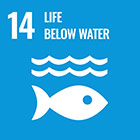
What can I do?
- Avoid eating unsustainable fish and seafood
- Avoid plastic bags
What is UNB doing?
- UNB Saint John Marine Block and Marine Semester
15: Life on land
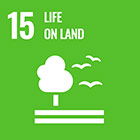
What can I do?
- Plant a tree
- Support or volunteer for local environmental groups
What is UNB doing?
- UNB-wide goal: Plant ten new trees every year
16: Peace, justice and strong institutions
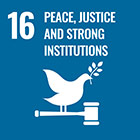
What can I do?
- Stand up for human rights
What is UNB doing?
- Working towards a Truth and Reconciliation Action Plan
- Mi'kmaq-Wolastoqey Centre
17: Partnerships for the goals
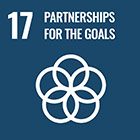
What can I do?
- Lobby your government to support sustainable development funding, social support and environmental protections
What is UNB doing?
- Member of local, national and international partnerships
Check your understanding
This work is licensed under a Creative Commons Attribution-NonCommercial 4.0 International License.
